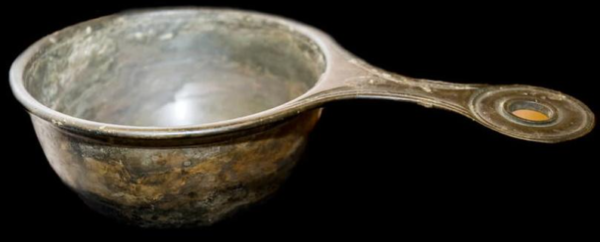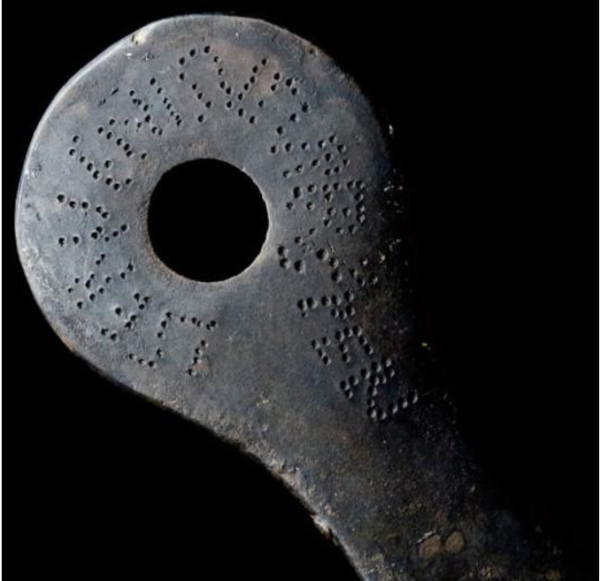
Malton Museum celebrates its 90th birthday this year. Much of our archaeological collection comes from excavations undertaken at the site of Malton Roman Fort, Langton Villa and Crambeck in the 1920s and early 1930s, but local people had been interested in the history of the area long before that.
It is known that an inscribed Roman stone from Malton was shown at the Royal Society in London in 1755, and by the 1880s, Malton Field Naturalists and Scientific Society was established. They collected fossils, geological and natural history specimens, along with some archaeological items. A small selection of these were displayed in cases in part of the Subscription Rooms. Much of their collection was given to Hull Museum in 1932; but the archaeological objects they had acquired became part of the new ‘Roman Malton Museum’, opened in 1935.
One such artefact is this patera found in Malton. Trajan’s column in Rome depicts soldiers carrying these objects, thought to be their mess tins or saucepans. Made in Italy, of copper alloy, it has its maker’s name – Alpicus – punched into it. What makes it even more special is that it also has a second name – Lucius Servenius Super- believed to have been its owner, punched into the handle.
A rare survival
It’s quite rare to know the name of an individual Roman soldier.

Where did Lucius come from? How long was he stationed in Malton and how did his pan come to be left here? Did most soldiers put their name on their kit in the way that we might label our belongings today?
There’s lots we don’t know about the patera, but we recently discovered more about how it came to be part of our collection.
Records show that it was donated to Malton Naturalists Society by William I’Anson, a racehorse trainer who lived at Highfield in Norton. From newspaper reports we know that he purchased it at an auction of local antiquarian George Edson’s private collection in May 1891.
George Edson came by the patera in an interesting manner. It was uncovered in 1877/8 by workmen at Malton Gas Works. Knowing that he was a collector of such items, the workmen visited Edson’s home one Sunday evening, agreeing to sell it to him for the price of half a gallon (4 pints) of ale, a cost of around one Bidding at the auction was competitive and so William I’Anson paid substantially more for Mr Edson’s one shilling purchase; a hammer price of £5 15 shillings! We are very grateful for his foresight and generosity which means we still have this important and fascinating object in our collection today.
Want to know more about this object? Watch Dr Peter Addyman’s video.

Leave a Reply